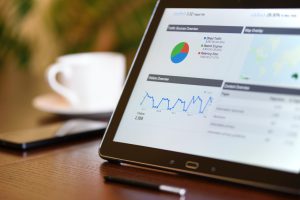The lingo of Data Analysis, thanks to its convoluted nature, has often been subject to confusion. Terms such as Big Data, Data-Driven, etc. may seem vague at first glance, and they will fall victim to false interpretations. One of the first goals as a data analysis enthusiast is to learn the terminology and then, you will have a better chance at understanding how data works, and how it could work for you.
Like all other endeavors, having proper knowledge of terminology has a substantial role in establishing a working concept of data analysis. A competent data analyst must fully comprehend what data-driven means, and apply it in their decision making.
What is a data-driven decision?
Data-Driven Decision Making is a decision-making process that is based on the interpretation of hard data and its uses in strategy making. However, decisions influenced by DDDM are only as reliable as the collected data, and the analysis provided by the data analyst. This method will give you an advantage in competition with other companies, but you can also use the insight provided by data-driven marketing to improve the efficiency of your organization and minimize waste.
Organizations can use data-driven decision-making for a plethora of purposes, ranging from finance to the health sector. Big Data has been considered a necessary tool in all these markets in recent years. A series of roles have become relevant with the rise of big data, as they can assist the management in making more objective decisions that can boost the development of any system.
Upon the emergence of DDDM, only an IT specialist was verified to collect and interpret the data, but with the improvement of new tools that make the data collection and interpretation easier, even managers can make data-driven decisions.
What are the steps towards data-driven decision-making?
Data utilization is a path to a better business, and we’ll go over the steps to achieve your Big Data goals:
1. Figure out your end-game
The first step in determining the way forward for your business is evaluating the market, the competition, and the future of your field. We recommend that you go in-depth when handling this part because a data-driven solution that doesn’t take all the angles into account can lead to misinformed decisions. After all, what’s Big Data if it’s missing its key elements?
Once you figure out the questions that concern the future of your business, you can collect the related data for later analysis. Thorough data collection ensures the effectiveness of your DDDM plans.
2. Find the proper source for data collection.
Determine your databases based on the source of your data. Data collection is an effective tool, but only if you have a variety of sources at your disposal.
What may prove difficult in this step is identifying common variables in the accumulated datasets. If you wish to utilize the data for future purposes, you may want to find other categorization methods. To that end, you should also find the best way for visual display of the data for such scenarios in the future.
3. Clean and organize your database.
Once you have accumulated the data, it will take longer to categorize the data first, to prepare it for analysis. It is estimated that around 80 percent of the entire data utilization process is spent on organizing the data, and the remaining 20 percent is dedicated to actual analysis. This principle shows how important it is to have properly organized data, avoid redundancy in analysis, and optimize the process.
The data cleanse or data cleaning process in
volves the elimination of tainted data or redundant data and data which is irrelevant to the goals of the analysis. A data dictionary is a great way to achieve this. You can also categorize the data based on parameters such as data type.
4. Perform statistical analysis.
The Clean Data is now ready for analysis using statistical models of data analysis. The models have to be tweaked for this specific dataset, to provide detailed answers for the questions you wish to answer through this analysis. You can try various statistical analysis models, be it through linear regression, decision trees or random forest modeling.
5. Choosing the right formats for visual representation
Once your analysis bears results, a visual representation will determine what the data means for your business. There are in principle, three methods for presenting data:
1- Descriptive Information: presenting the facts, leaves room for further interpretation.
2- Inferential Information: this method contains the facts, alongside a subject-oriented interpretation of the data based on project parameters.
3- Predictive Information: this method will present a solution and the prediction of how the solution will work out in the context of the gathered data.
An effective display of the accumulated and processed data is the best way to keep a clear account of the data, and it helps interpret the dataset and identify the problems that may occur down the road.
6. it’s time to arrive at conclusions.
Data-Driven Decision Making provides you with a clear answer, in the end, depending on whether or not you have done the hard work of collecting relative data and choosing the right method to analyze and interpret it. But this decision isn’t formed only through the discovery of new information, but rather, in some cases you will find the answer by going through the data already collected, to interpret a new way to tackle problems that may have remained unnoticed otherwise.
Businesses thrive on assumptions, and data-driven decision-making ensures that your assumptions are factually correct, thus raising your chances of implementing successful business strategies and marketing campaigns. Proving the statistical probability of these assumptions is no easy task. But if your analysis proves that these assumptions are wrong, you can make the necessary changes in your business strategies to remedy the damages that these false assumptions may have caused to your business efficiency. In the end, a successful data-driven decision should make way for more questions to be answered, thus creating a cycle of trial and error for assumptions. If implemented correctly, data-driven decision-making guarantees constant improvement for your business.
The Advantages of Data-Driven Decision Making
Making informed decisions based on data analysis can improve not just your financial output, it can also affect the efficiency of your human resources.
1. Making more confident decisions
Data is objective, and making data-driven decisions means your choices can be as objective as your analysis allows you to be. Considering the impacts of your decisions determines just how effective they can be, which reinforces your decisions that may have been subject to criticism, were they not based on data.
2. Save money and increase ROI
Starting your business plans using data from the very beginning can save you a lot of extra costs, and you can avoid losses by not launching projects or products that data suggests could lead to disaster.
By using data-driven analysis as your guide, you can predict market trends and create more lucrative campaigns based on what the market will demand.
Data collection will ensure customer satisfaction, which is a key factor in how much return your investment will attract.
3. You can formulate plans faster, and adapt quicker
In a competitive market, the ability to predict emerging trends and customer purchase patterns can give you the edge you need to rise to the top. Leading a new trend can be tricky if you make assumptions with no grounds, or based on personal interpretation rather than a detailed analysis of the facts on the ground. Data-driven campaigns respond to the perceived changes and leave room for possible scenarios that may mandate a change in your current policies. How fast you adapt to the new parameters that the data analysis can reveal determines the success of your business model.
Examples of data-driven decision making
Today, the leaders of all industries make data-driven decision-making a top priority in planning their campaigns and customer attraction strategies. The following are a few of the top dogs, so to speak, that have implemented data analysis to improve returns on investments and marketing appeal:
Lufthansa:
Lufthansa is one of the biggest airlines worldwide, ranking second in the European market with more than 700 carriers and one of the largest customer bases in the aviation industry.
It has almost 500 subsidiaries, which used to run rampant when it came to analyzing their data and categorizing the various aspects of the company when it came to company-wide strategies.
The miracle of data-driven decision-making helped the company boost its productivity by 30%, after opting for a uniform data analysis platform.
Leaders of the company’s various subsidiaries were able to communicate better and make decisions based on the overall needs and capabilities of the whole system.
Amazon:
Amazon uses a variety of available data, such as a customer’s past purchases, their current wish list, and shopping cart and previously visited products to determine the list of recommendations that are advertised to the user. They also incorporate key metrics such as click rates to identify the most popular products, to find out which products they should focus on for future campaigns.
Using data-driven analysis, they were able to increase the marketability of their products and sales by simply listening to the collective voices of their customers.
Why is Data-Driven Decision making so important for your business?
Today’s market is a vicious circle of countless providers competing for the ultimate goal: customer satisfaction. In such a competitive market, the real winner is whoever understands the trends and can predict what the customers will want before they do. The data-driven analysis will provide objective findings on how these trends will shape up, by using the software that identifies the patterns that will indubitably repeat themselves. Decisions made based on this analysis are guaranteed to have a positive impact on not just the present, but also what the future holds for your business.



